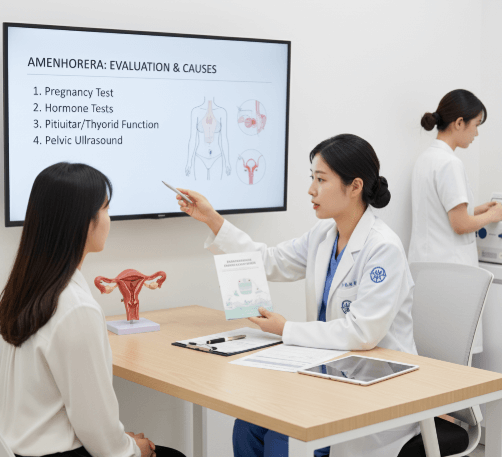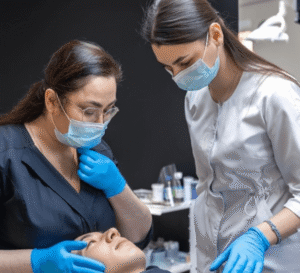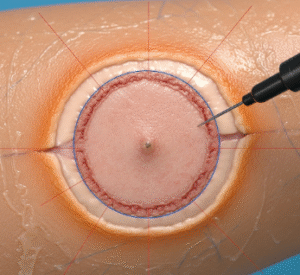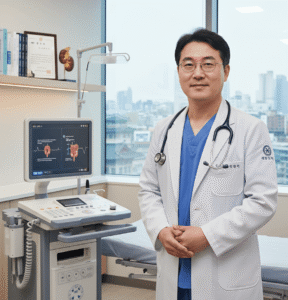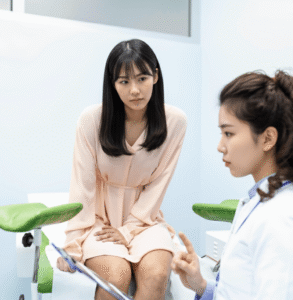What it is
Amenorrhea is the medical term for the absence of menstrual periods. It is not a disease itself but a symptom of underlying conditions.
✔️ Primary amenorrhea → When menstruation does not begin by age 15–16.
✔️ Secondary amenorrhea → When a woman who previously had regular periods stops menstruating for 3 months or longer (not due to pregnancy, breastfeeding, or menopause).
➡️ In Korea, evaluation of amenorrhea is done at gynecology clinics, fertility centers, and university hospitals using advanced diagnostic tools and a comprehensive medical approach.
Why it’s done
Evaluating amenorrhea is important because it can:
🔹 Detect hormonal imbalances such as thyroid or pituitary disorders.
🔹 Diagnose reproductive conditions like polycystic ovary syndrome (PCOS), endometriosis, or premature ovarian insufficiency.
🔹 Identify pregnancy or structural abnormalities in the reproductive tract.
🔹 Prevent complications such as infertility, bone density loss, or heart disease from prolonged low estrogen.
🔹 Guide fertility planning for women who want to conceive.
💡 Highlight: Absence of periods should never be ignored—it may be a sign of underlying reproductive or general health issues.
Alternatives
While full medical evaluation is the most accurate approach, some women may first try:
➡️ Lifestyle changes – improving nutrition, reducing stress, or gaining/losing weight if extremes are present.
➡️ Home pregnancy test – to rule out pregnancy as the most common cause.
➡️ Cycle tracking apps – helpful for spotting irregular patterns but not diagnostic.
➡️ Alternative therapies – such as acupuncture or herbal treatments (commonly offered in Korea).
⚠️ Note: Self-care may help if amenorrhea is lifestyle-related, but persistent absence of periods requires professional medical evaluation.
Preparation
Before visiting a clinic in Korea for amenorrhea evaluation, preparation usually includes:
✔️ Tracking menstrual history – last period date, cycle length, and changes.
✔️ Listing symptoms – hot flashes, acne, hair growth, weight changes, or stress levels.
✔️ Medical history – thyroid disease, PCOS, diabetes, eating disorders, or previous surgeries.
✔️ Pregnancy testing – recommended before further evaluation.
✔️ Fertility goals – whether or not pregnancy is desired soon.
💡 Tip: Korean doctors often recommend bringing cycle records or health apps to help assess hormone patterns.
How it’s done
The evaluation of amenorrhea in Korea is systematic and thorough:
- Consultation and medical interview → Doctor discusses menstrual history, stress levels, medications, and family history.
- Physical exam → Includes checking weight, BMI, thyroid gland, and pelvic exam.
- Laboratory tests:
- Pregnancy test (blood or urine).
- Hormone levels: estrogen, progesterone, FSH, LH, thyroid hormones, prolactin.
- Other blood tests for anemia, diabetes, or autoimmune conditions.
- Imaging tests:
- Pelvic ultrasound to check uterus and ovaries.
- MRI or CT scan if pituitary gland or hypothalamic problems are suspected.
- Specialized evaluations:
- Progesterone challenge test (to assess ovarian function).
- Genetic testing in young women with primary amenorrhea.
💡 Highlight: Korean clinics combine advanced hormone testing and imaging to provide accurate diagnosis quickly.
Recovery
Since evaluation itself is diagnostic, there is no physical recovery needed. However, treatment outcomes depend on the underlying cause:
✔️ Lifestyle changes (nutrition, stress management, healthy weight) may restore cycles naturally.
✔️ Hormonal therapy (pills, patches, injections) may regulate cycles.
✔️ Fertility treatments such as ovulation induction or IVF may be offered for women who want pregnancy.
✔️ Surgery may be needed if structural issues like uterine abnormalities are found.
When to revisit a doctor:
➡️ If periods remain absent despite treatment.
➡️ If new symptoms develop (severe pain, hot flashes, rapid weight change).
➡️ If fertility attempts are unsuccessful after 6–12 months of treatment.
💡 Important: Regular follow-up is critical in Korea, where doctors monitor hormone levels and adjust treatment plans as needed.
Treatment option in Korea
Korea offers excellent care for women with amenorrhea:
⭐ Gynecology and fertility clinics with advanced hormone and imaging labs.
⭐ University hospitals with multidisciplinary teams (endocrinology, gynecology, psychiatry, nutrition).
⭐ Fertility centers offering ovulation induction and IVF when needed.
⭐ Integration of traditional Korean medicine (herbal therapy, acupuncture) for cycle regulation.
⭐ Affordable and accessible consultations compared to many Western countries.
💡 Highlight: Korean healthcare combines modern diagnostics and holistic approaches, making it one of the best places for evaluating and treating amenorrhea.
Key Highlights
✔️ Amenorrhea is the absence of periods, classified as primary or secondary.
✔️ Evaluation in Korea includes blood tests, imaging, and hormone studies.
✔️ Causes include PCOS, thyroid disorders, stress, weight changes, or ovarian failure.
✔️ Treatment depends on cause and ranges from lifestyle changes to fertility therapies.
✔️ Korean clinics provide advanced, affordable, and holistic care.

